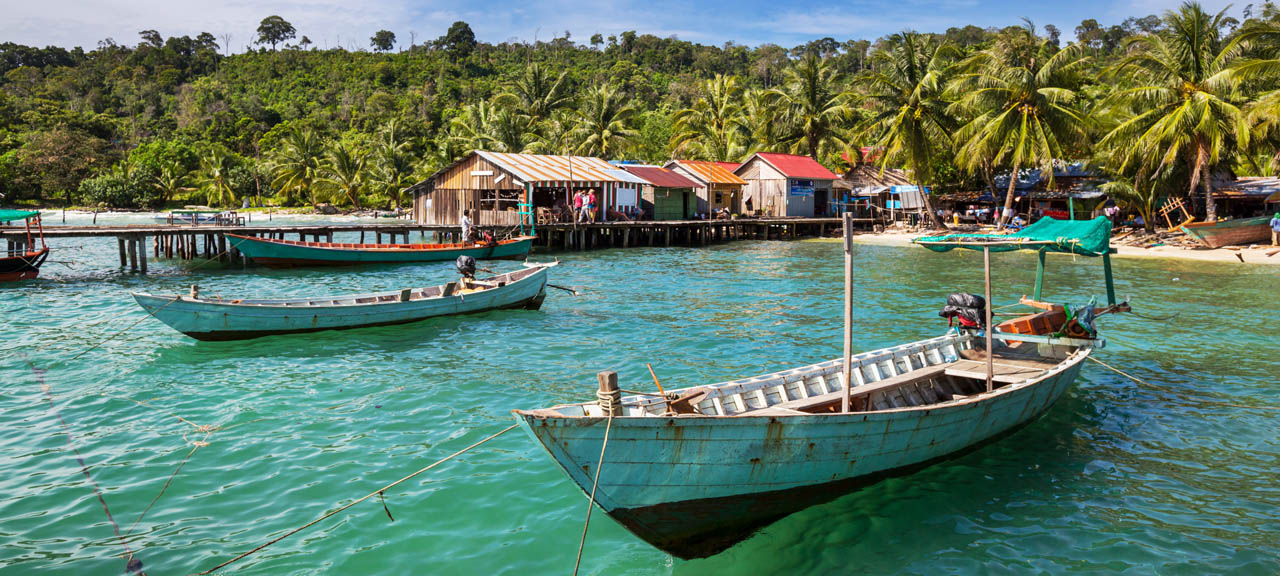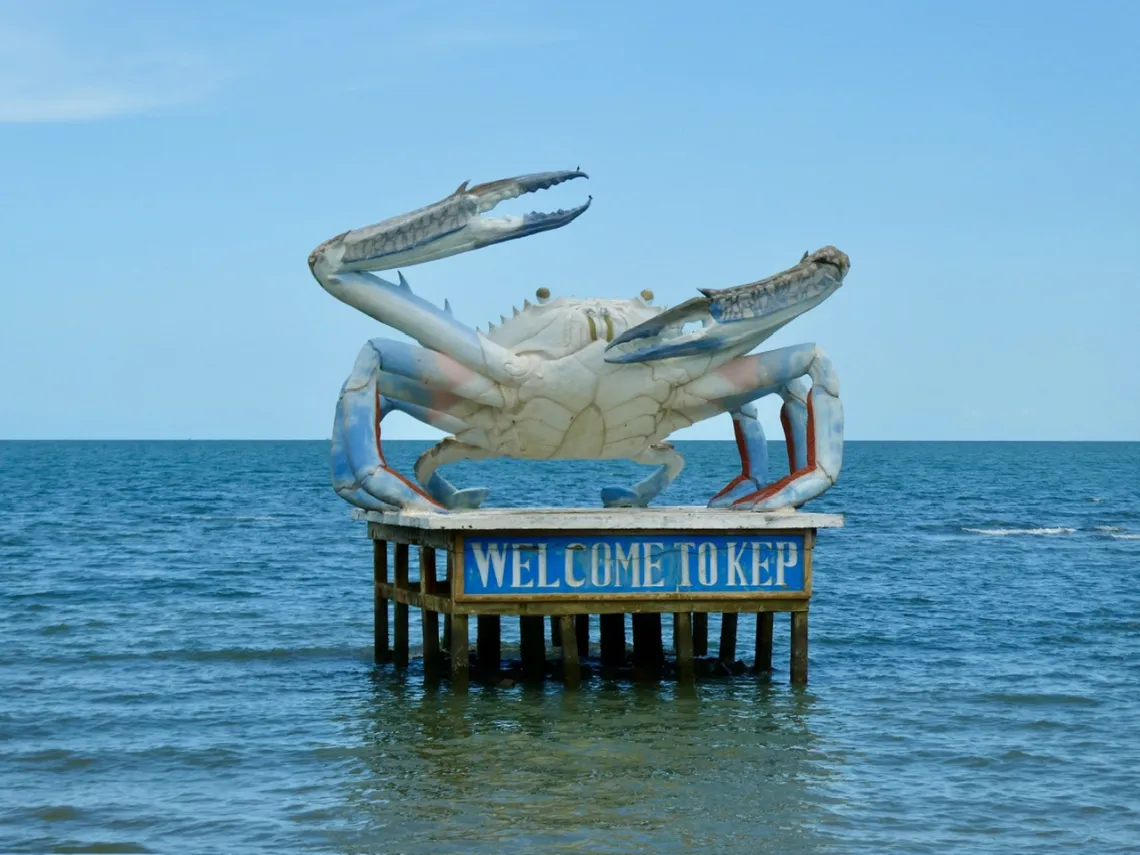



Kep is the capital of Kep Province in southern Cambodia. It lies near Kep National Park. The small city has a population of 35,990. The city is home to many abandoned villas left from by the French Colonial authorities and the elites of Cambodia during the 70s due to the Khmer Civil War and the Khmer Rouge. Wikipedia
November to March: Dry and cooler — perfect for beach time and sightseeing.
April to May: Hot but good for quiet travel.
June to October: Rainy season — lush and peaceful with fewer visitors.
From Phnom Penh:
3–4 hours by bus, minivan, or private taxi.
From Kampot:
30–45 minutes by tuk-tuk or motorbike — ideal for a day trip.
From Sihanoukville:
3–4 hours by road.
Kep Beach: Small and quiet, with shaded seating and calm waters.
Crab Market: Famous for fresh seafood — watch fishermen and dine on pepper crab.
Kep National Park: Lush forest with hiking trails, ocean views, and wildlife.
Kep Butterfly Garden: Peaceful spot to see butterflies and learn about local ecology.
Abandoned Villas: Remnants of the French colonial era, scattered through town.
Wat Samathi: Hilltop temple with panoramic views of the coast and countryside.
Eat fresh crab with Kampot pepper at seaside restaurants.
Hike the trails in Kep National Park or rent a mountain bike.
Explore the ghostly remains of colonial-era villas.
Take a boat trip to Rabbit Island (Koh Tonsay) — just 20–30 minutes away for swimming, seafood, and hammocks.
Visit local farms, pepper plantations, or salt fields.
Enjoy quiet sunsets on the coast or at the crab market pier.
Budget: Guesthouses and small hotels near the beach and crab market.
Mid-range: Boutique resorts with pools and garden settings.
Luxury: Upscale eco-resorts and villas with sea or hill views.
Many places offer peaceful, nature-immersed stays ideal for relaxation.
Seafood heaven: Kep is famous for crab, squid, and prawns — especially with green Kampot pepper.
Crab Market eateries: Dozens of casual seafood spots line the water.
Local dishes: Khmer soups, fried rice, and noodle dishes available around town.
Western food: A few cafés and French-inspired bistros cater to travelers.
Fresh fruit & snacks: Available at roadside stalls and local markets.
Once a luxurious French seaside retreat, Kep still retains quiet elegance.
Buddhism plays a central role — temples are serene and often scenic.
Locals are friendly and welcoming, proud of their crab-fishing and pepper-growing traditions.
Respectful behavior and modest clothing are appreciated, especially in temples and villages.